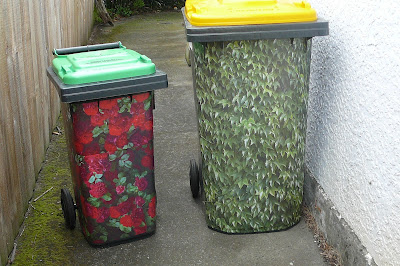Are Australian insurance companies shonky?
The answer is yes, in the view of Australian consumers group Choice.
Choice announced the 6th annual Shonky Awards recently and the Australian insurance industry was top of the list. The reason why the industry was given an award is here and in more detail here. Some of the specific reasons behind the selection were:
.
Choice announced the 6th annual Shonky Awards recently and the Australian insurance industry was top of the list. The reason why the industry was given an award is here and in more detail here. Some of the specific reasons behind the selection were:
Much of the assessment was based on information provided Legal Aid Queensland (LAQ), however they were also influenced by the attitude and observations of government ministers.
- Policyholders dissuaded from making claims Insurance company staff talked policyholders out of lodging claims at the first point of contact. Policyholders were told over the phone not to bother because they wouldn't be covered, even though no claims assessment had been done. Some of these policyholders were able to lodge claims after repeated attempts.
- Claims summarily dismissed Claims were dismissed out of hand without any investigation. One company dismissed claims based on aerial photographs and said it would not send an assessor to the property. In at least one case, the photographs were taken after the flood waters had receded.
- Verbal assurances conveniently forgotten Verbal assurances from company staff or company reps that properties were covered for flood were dismissed or denied after claims were made. Many policyholders said they were verbally assured that their homes were covered for flood, but insurance companies routinely claimed they had no physical record of such conversations. That meant the promises didn’t count as evidence during the claims process. Insurers often claimed to have no recordings of calls in which policyholders were assured they were covered.
- Confusing and complex claims process Many policyholders were subjected to a lengthy, confusing, misleading and rude claims process. Assessors sped through inspections showing little interest; promised deadlines were not met; after lengthy delays policyholders were told that the insurer was still waiting for assessor and hydrology reports or that the final decision was still under review. Some claims were still not processed six months after they were lodged.
- Communication ‘clear as mud’ Letters from insurers about whether a claim was accepted or denied were so convoluted that some policyholders required a lawyer’s assistance to determine whether the insurer has agreed to pay or not. This crucial information was often buried in a sea of indecipherable verbiage, often toward the end of the letter. Many lawyers also had trouble figuring out what the letters said.
In August this year Australia’s Minister of Financial Services and Assistant Treasurer Bill Shorten said “It is clear the rate of disputes for flood claims is unacceptably and substantially higher than for other natural disasters such as bushfires, cyclones and hailstorms”.
Mr Shorten made the statement after an insurer had reversed a decision not to pay 247 claims in the Ipswich area after new information about water flows had been made available. The policyholders had been waiting six months to find out whether their claims would be honoured.
The minister called on the insurance industry at that time, and earlier, to “deliver a standard definition of flood to ensure policy holders know where they stand and have confidence in the insurance product they are purchasing”.
Discussing flood cover in April, Mr Shorten said “product disclosure statements go to 35,000 words, and that's too long. I mean the 10 commandments were 300 words, the Magna Carta 300, yet your home and contents insurance policy is 35,000. That's not on”.As you can imagine the insurance industry was not happy with being the first of the worst. Insurance news website insuranceNEWS.com carries a balanced view of the Award and the insurance industry's response. Their article includes a rebuttal from the Insurance Council of Australia CEO Rob Whelan. You can find it here.
.
